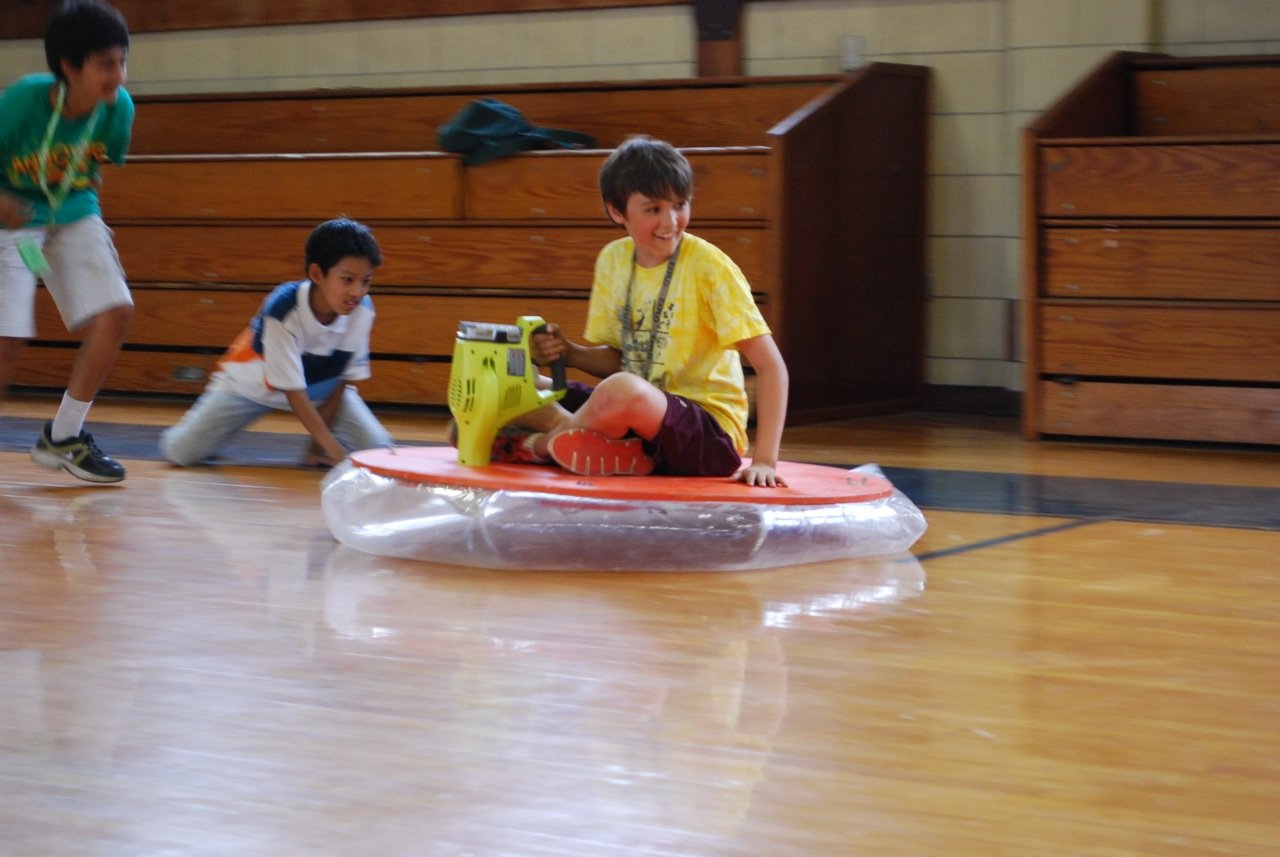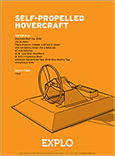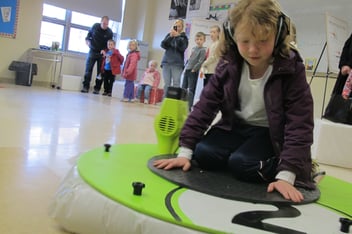Hovering Hovercrafts!

From the "Physics of Motion" course at Explo at Yale to our "Fly a Hovercraft" program at Explo Mini, Explo LOVES hovercrafts. Read about some of the interesting scientific concepts they engage, and download our instructions to build your own!
What is a Hovercraft?
A hovercraft is simply a craft that rides on a cushion of pressurized air. As a result, hovercrafts are amphibious vehicles, which means they can be used on both land and water. The basic mechanics of a hovercraft include a fan, an engine, a deck, and a skirt. The fan pushes air down below the deck of the craft. Once below the deck, the skirt holds the air, causing pressure to build until it gets so high that it spills out from under the skirt in all directions. This rushing out air creates lift. This is the same “lift” that’s created when very fast air moves over the wing of an airplane.
 Build Your Own Hovercraft!
Build Your Own Hovercraft!
Download our hovercraft plans. All the materials you need are available at your local hardware store (except maybe the meat tray — we got that at a grocery store). Our hovercrafts are customized with racing stripes and flames, but we'd love to see how you customize yours! Post a picture of your hovercraft on our Facebook page . Happy building!
How Does it Hover?
When the fan pushes air below the deck it’s trapped by the skirt. As more and more air is forced below the deck, the air pressure increases to the point that it starts rushing out from under the edges of the skirt. This rushing air creates an upward force on the hovercraft which is called thrust. The continuously rushing air helps to maintain thrust which creates a cushion of air on which the hovercraft can glide.
How Does It Move?
The fan in the hovercraft is essentially a propellor, just like on an airplane, which makes it an excellent air mover. Propellers rely on the Bernoulli Principle which tells us that the faster air moves, the less pressure it can exert on the things around it. Airplane wings are a perfect example. The shape of a wing is longer on the top than it is on the bottom which forces air to move more quickly over the top of the wing that it does under the bottom of the wing. This means there’s more pressure under the wing than over the top of it and that change in pressure causes lift.
You can think of a propellor as a group of airplane wings lined up in a row, so that they can all push air in the same direction. When the propellor spins through the air, it changes the direction the air is moving and funnels it in one direction, causing forward thrust and pushing the hovercraft (or plane) forward.
Why Use a Hovercraft?
Ever wonder why it’s so easy to run on a gymnasium floor, but almost impossible to run on a sheet of ice? The answer: friction. This force describes how much two surfaces want to “stick” together. You can run on a gym floor because your sneakers are great at sticking to the wood floor, so you can easily push your feet against the floor and run. It’s much harder to run on ice, because your feet just won’t stick to ice, so you can never even get yourself going!
This is the beauty of hovercrafts. Unlike car tires, which are designed to stick to the road, a hovercraft rides on air which hardly sticks to the ground at all. Could you image a leaf blower, like the one that powers Explo’s large hovercraft, pushing you along while you're sitting on your bicycle? Probably not. And yet, our hovercraft is powered by a leaf blower and it can still move even with you riding on it!
 Come Ride a Hovercraft!
Come Ride a Hovercraft!
On Sunday, April 12, 2015 we're hosting the Explo Learning Festival — an afternoon of fun, discovery, and exploration — on the campus of Wheaton College for students ages 6 to 12. Build a hovercraft, then ride on one, too!



